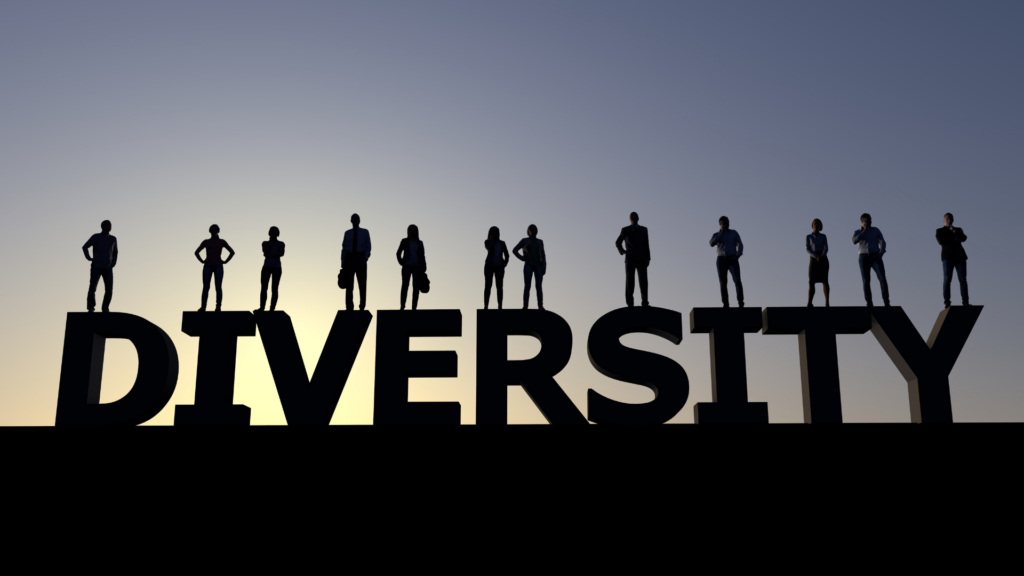In a world where we are increasingly connected and diverse, the workplace needs to adapt accordingly. Creating an environment of diversity, equity, inclusion, accessibility, belonging, and justice benefits not only the employees, but the organization as a whole. The workplace is a reflection of the world we live in. It is our responsibility to foster an inclusive workplace culture that will allow everyone to thrive.
An inclusive workplace prioritizes diversity, equity, and inclusion. It is essential to create an environment where people from all backgrounds can feel valued and heard. Inclusive workplaces also embrace accessibility, ensuring that employees with disabilities are supported and accommodated. Accessibility also includes accommodating alternative languages and cultural differences. When everyone is included, a sense of belonging is created. This feeling of belonging fosters a sense of community and cooperation, which enhances the workplace’s effectiveness.
In another episode of Catherine’s Corner, our guest, Rhett Burden, shares the importance of inclusivity in the workplace regardless of gender identity, language, race, and religion. The importance of inclusivity in the workplace cannot be overstated. When organizations embrace and promote inclusivity, they foster a diverse and dynamic workforce that can lead to several significant benefits.
DEI – Diversity, Equity, and Inclusion – they’ve become a common theme in workplaces. But now, there’s an evolution. Alongside DEI, we’re realizing the significance of other crucial elements for creating a positive work environment – Belonging, Accessibility, and Justice. These are the new additions to the DEI acronym.
Because let’s face it, DEI loses its essence without a strong emphasis on Belonging. It’s about more than just ticking boxes; it’s about fostering a sense of belonging for everyone.
And let’s not forget Accessibility and Justice. They go hand in hand with DEI, and without them, the whole concept loses its impact.
Taking Steps to Create an Inclusive Culture
To achieve inclusivity, organizations must proactively take steps to create an inclusive culture. This involves:
1. Implementing DEIABJ Policies
Having those crystal-clear policies that outright promote diversity and inclusivity is like laying the solid groundwork for a workplace that truly embraces everyone. It’s about walking the talk and ensuring that every team member feels valued and respected.
But you know what? It doesn’t stop there. It’s equally important to foster a culture where individuals feel empowered to bring their authentic selves to work, knowing they belong and have a voice that matters. When we combine those policies with an inclusive culture, that’s when real magic happens, and we see the full potential of a diverse and thriving workforce.
2. Provide Training
investing in training programs for both employees and management on things like unconscious bias, cultural awareness, and inclusive communication can do wonders for our workplace. It’s not just about checking off boxes; it’s about fostering genuine understanding and empathy among our team members.
3. Creating Diverse Hiring Practices
It’s high time for organizations to really step up their game and make a conscious effort to diversify their talent pool. When you actively promote equal opportunities for all candidates, regardless of their background, you open the doors to fresh perspectives, innovative ideas, and a richer tapestry of skills and experiences.
4. Promoting Employee Resource Groups
You know what’s really awesome? Employee Resource Groups! They’re like these fantastic platforms that bring together employees who share common backgrounds or experiences. It’s not just about forming connections; it’s about creating a supportive community where people can lean on each other and make a real impact on organizational initiatives.
5. Addressing Negative Behaviors
Ensuring that any form of negative behavior is promptly addressed and dealt with creates a safer environment for all employees.
Establish a Shared Language in your Organization
Give your workforce training on Diversity, Equity, Inclusion, and Belonging (DEIB) 101 and take the first step towards creating sustainable change in your organization and beyond. This training program will be highly customized for your team’s needs, and you will gain a comprehensive understanding of DEIB terms and their significance, as well as explore the importance of finding your collective “Why” behind fostering diversity and inclusion.
Written by: Cleo Tubon



